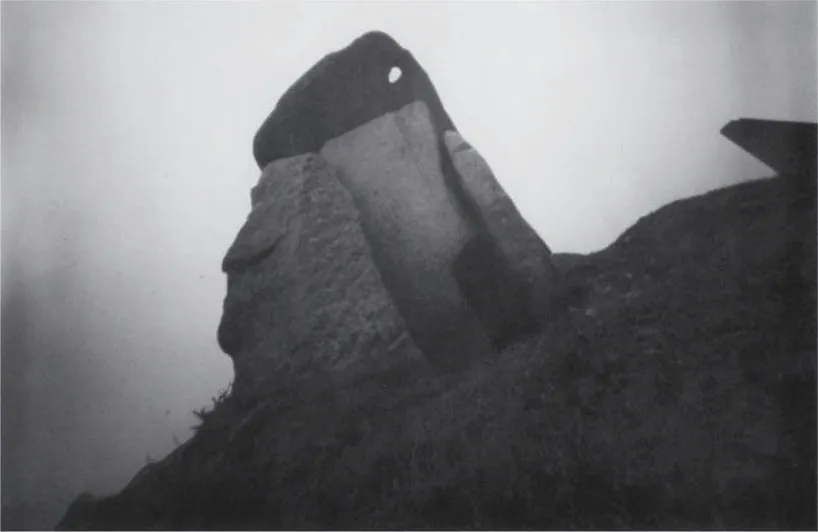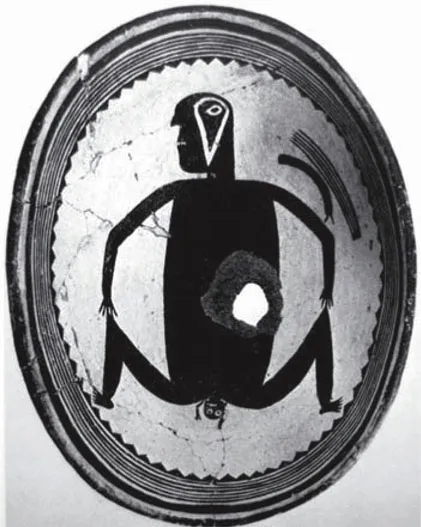![]()
CHAPTER 1
Pinhole’s History in the Exploration of Science and Ideology
The place of emergence is the womb of the earth.
—Barbara G. Walker, The Woman’s Encyclopedia of Myths and Secrets, 1983
The eye is the window to the soul.
—Leonardo Da Vinci
AND now, I said, let me show in a figure how far our nature is enlightened or unenlightened:—Behold! Human beings living in an underground den, which has a mouth open towards the light.…
—Plato, The Republic, Book VII
Unable to resist my eager desire and wanting to see the great multitude of the various and strange shapes made by formative nature, and having wandered some distance among gloomy rocks, I came to the entrance of a great cavern, in front of which I stood some time, astonished and unaware of such a thing. Bending my back into an arch I rested my tired hand on my knee and held my right hand over my downcast and contracted eyebrows: often bending first one way and then the other, to see whether I could discover anything inside, and this being forbidden by the deep darkness within, and after having remained there some time, two contrary emotions arise in me, fear and desire—fear of the threatening dark cavern, desire to see whether there were any marvelous thing within it.
—Leonardo Da Vinci
If in all ideology men and their circumstances appear upside down in a camera obscura, this phenomenon arises just as much from their historical life-process as the inversion of objects on the retina does from their physical life-process.
—Karl Marx (with Friedrich Engels) The German Ideology
THE PINHOLE ARCHETYPE—FROM THE DARKNESS OF CAVES AND HOLED STONES
Much of the visual imagery that we see is directly related to inborn unconscious ideas or patterns of thought. Science has labeled these patterns archetypes. Many of the pinhole images in this book and my conceptions about these images are reflective of this idea.
In the early 20th century, the psychologist Carl Jung was the first to call attention to these genetic artifacts. Understanding archetypes allows the viewer to comprehend the basis for his or her instinctive feelings, sometimes expressed as strong knee-jerk reactions—ones that are not necessarily constrained by logic—generated from seeing archetypal imagery.
Visual archetypes take many forms. An example of just one form of archetypal evil brethren imagery would be the planes hitting the World Trade Center Twin Towers followed by most Americans’ knee-jerk feelings of nationalism and revenge—“They can’t do that to us.”
As Jung emphasized, archetypes connect to visual patterns that are universally present in every individual’s psyche and, therefore, other cultures would have their own evil brethren motifs. Archetypes are constantly being updated by new imagery in the world around us—but that specific updated image always refers back to an ancient archetypal motif whose original form cannot be identified, as it goes far, far back into humankind’s history.
The Pinhole Archetype
A circular aperture is an opening—a primary archetypal motif for birth and a place of transformation, symbolically feminine. It presents the viewer with feelings of wonder, mystery, and sublime questions about life.
Many ancient cultures have emergence legends designating a hole in the earth or a hole in the sky as the sacred place of origin where their forebears first appeared. Every cave, too, has mysterious energies connected to it. Leonardo’s cave mentioned in his notebooks and Plato’s cave in The Republic (book VII) are perfect examples of those eternal questions surrounding cave imagery: life, death, and transformation. A somewhat superficial analogue for this would be Pinhole Cave in Derbyshire, England, thus named due to Victorian ladies going into the cave and dropping their hat pins or hairpins into a puddle at the back of the cave. They did this for good luck, as the myth goes, so that once they have deposited their pin the first man they see they would marry (not exactly the best way to select a husband)—but a good example of a projected transformative experience. It is an irrational superstition and surrounded by mystery—but that is the point. It is hardly different from reading the astrology pages in your local newspaper.
A large stone placed vertically appeared as a structure rooted deeply in Mother Earth, and this same large stone, with a circular hole in it (Figure 1.1A), was used ritualistically to reenact the transformation of birth. A baby passed through the hole received regenerated birth energy. The East Indian definition for a holed stone was “gate of deliverance.”
Figure 1.1A Drawing, Joseph Blight, The Tolvan Stone of Constantine, 1873. One of the last places where pre-Christian rites of baptism survived. Babies were passed nine times through the hole in the stone and then laid to sleep on a grassy knoll. The stone, about 9 feet tall, is located in Cornwall.
In the California’s Providence Mountains in Wild Horse Canyon (near the Mojave Desert) is Womb Rock, also known as Rebirth Rock, a large outcrop with a natually shaped tunnel that opens toward the east (Figures 1.1B and 1.1C). The tunnel is large enough to crawl through. Its smoothly polished floor indicates that many people have done this—probably in conjunction with some ritual.1 The archeologist E. C. Krupp wrote the following about this unusual site:
Figure 1.1B © Tom Schweich, Womb Rock (Rebirth Rock), lens photograph, circa 2000.
Figure 1.1C © Dennis Slifer, Inside Womb Rock (Rebirth Rock), lens photograph, circa 1998. From this side, looking through the hole toward the eastern horizon, there is a notch in the landscape profile. At the equinoxes the sun appears to rise in that notch.
Shamans may have passed through the birth canal of Womb Rock as part of a seasonal effort to renew the world. Youth on the edge of adulthood may have crossed the frontier with the passport of rebirth. Womb Rock may have also been a portal for the symbolic transformation of shamanic candidates into genuine dreamers. We can see what kind of power is transferred from these wombs of Mother Earth even if we can’t be certain who were the beneficiaries.2
The manmade circular hole in the capstone at Trevethy Quoit (Figure 1.1D) in Cornwall, England, is one of several that still exist. A quoit is the name for a burial chamber—upon burial the entire chamber was covered with dirt and became a burial mound. The circular hole in its capstone became that place of transformation—an opening for the person buried within.
Figure 1.1D © Eric Renner, Trevethy Quoit, 6 × 9-inch pinhole photograph. This large stone quoit is situated in a field at St. Cleer in East Cornwall, England.
Figure 1.1E Mimbres black on white bowl, Childbirth, Swarts Ruin, 2½ inches high. Mimbres Valley, NM, circa 1000 A.D. Collection Peabody Museum, Harvard. The bowl is typical of burial pots of the ancient people who lived in the Mimbres Valley, NM. Upon burial, a hole was poked through the bottom of a utilitarian bowl. It was then laid over the person’s head and become a place of transformation for the spirits.
Leonardo’s quote “The eye is the window to the soul” reflects that same idea: that humans as natural structures have a window of transformation—the eye—that looks out upon the world. Thus, that same human window became a way for Leonardo to metaphorically see inward to discover the soul (the soul being a mysterious projected inner-being).
The human eye, therefore, is an ancient place of transformation. Much of the information in this book on pinhole photography, as well as many of the images within it, connects the pinhole as a direct ancestral link to the quote the eye is a window to the soul. As an analogue it could be said that the pinhole camera also is the window to the soul. But, as we will find, the pinhole camera—as an extension to the eye—supplies a sense of wonder that is different from what the eye with its lens sees.
EARLY PINHOLE OPTICS—ECLIPSES, TELLING TIME, ASTROLABES, AND OPTICAL PHENOMENA
Pinhole images are everywhere. Without a doubt, early humans were able to see pinhole images of the eclipsed sun on the ground under tree canopy—the sun is seen as a crescent. Every eclipse seen in the accompanying lens photograph (Figure 1.2) is actually a pinhole image of the sun. Thousands of pinholes images of the sun are created naturally by chinks in overlapped leaves from just about any large tree (Figure 1.3). When there is not an eclipse, these same leaves cast pinhole images of the full solar disc as easily recognizable circular spots onto the ground.
Figure 1.2 © Nancy Spencer and Eric Renner, Pinhole Images of the Solar Eclipse, May 10, 19...





